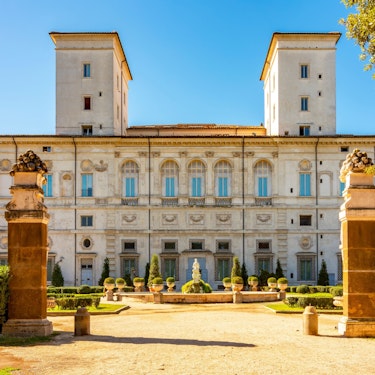More about: Rome Omnia Card
Walking around Rome is a journey back in time. They call it the Eternal City and for me, it's literal, because you never finish visiting its corners, monuments and museums. To make sure that its long list of attractions doesn't take its toll on you, there's the Omnia Card.
What is the Omnia Card and how much does it cost?
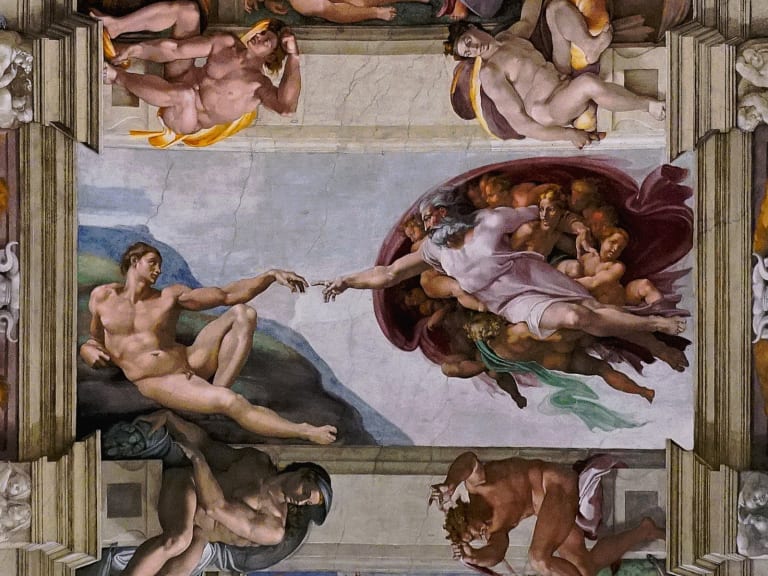
I'll start by telling you that the Omnia Card is nothing more or less than a pass to visit the city with free admission or discounts at most of its points of interest.
In addition to free admission and discounts at the city's main points of interest, it also gives you free transport around the city (including the tourist bus) and economic advantages when booking guided tours, bike rentals, tickets to shows and visits to archaeological sites. The price will depend on the type of card you want to buy.
24-hour Omnia Card
This is the specialised Vatican card and will allow you to visit all the points of interest in Vatican City (Vatican Museums, Vatican Gardens, St. Peter's Basilica and access to the Dome).
72-hour Omnia Card
This is my favourite version, not only because you have much more time to enjoy the main tourist attractions of the city, but also because the 72-hour version also includes the much more complete Roma Pass tourist card, which I talk about in this other article I wrote on Rome Pass.
Is the Omnia Card worth buying?
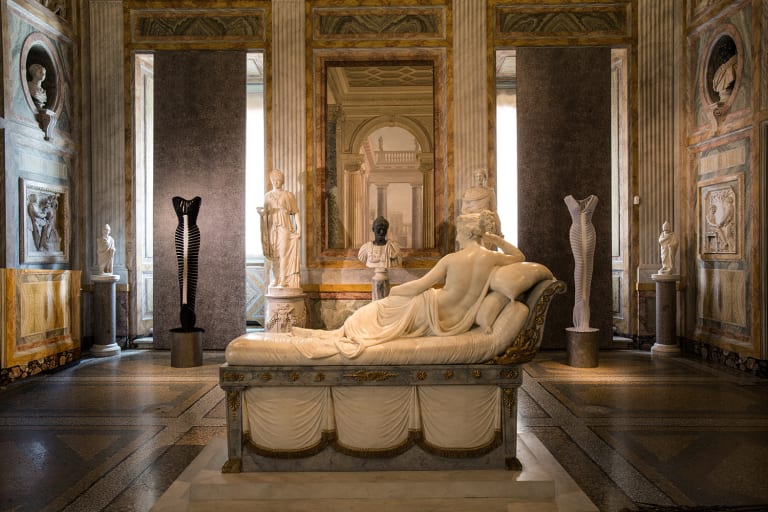
This is perhaps the first deterrent to ask yourself whether or not it is worth investing in it. The answer to this question is easy: it is worth it if you are going to take advantage of it and you will take advantage of it if your goal is to make the most of all the culture that the city of Rome and the Vatican have to offer.
Before I give you more details, let me give you an example: the visit to the Vatican Museums, the Rome sightseeing bus and the entrance to St. Peter's Basilica with audio guide already cover almost the entire 24-hour pass of the Omnia Card. Now the question is: what do you want to see?
If, like me, when you visit a city you don't want to leave anything out and you love museums and monuments, I can tell you without hesitation that the Omnia Card is worth it financially (and don't underestimate the option of avoiding the queues at the Colosseum or the Vatican, which can last between one and a half and three hours).
When is it NOT worth it?
I have also prepared a list of cases in which I think it would not be worth buying the Omnia Card.
- When you are only going to visit one or two museums during your trip,
- When you have additional discounts for age or profession at tourist attractions (these are not cumulative with those offered by the Omnia Card and the Roma Pass),
- When you are going to spend weeks in Rome and you are going to dose your visit to the museums with walks around the city,
- When you have already seen the main tourist attractions in Rome (Vatican, Colosseum, Capitoline Museums, Borghese Gallery?) on previous trips and you don't want to visit them again and
- When waiting time is not a problem for you.
In any of these cases, the best option for you would probably be to buy tickets for the Colosseum or the Vatican (a must-see in Rome) separately. Here's how to do it: Vatican Tickets and Tours.
How does the Omnia Card work?
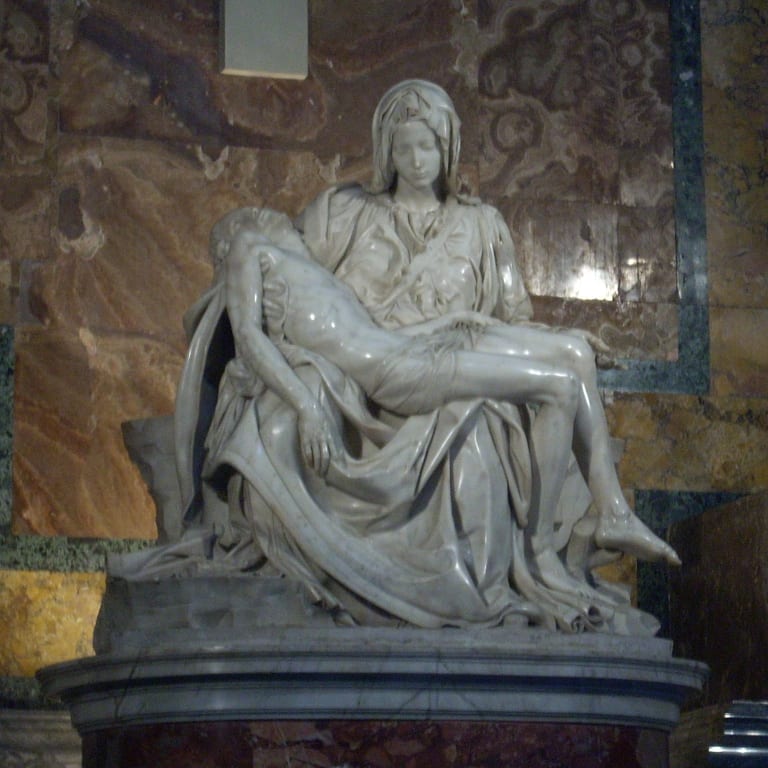
Next, I will tell you step by step how you can book to start using this tourist pass. You will see that it is very simple:
Buy it
When you buy the Omnia Card online, the first thing you will have to do is to choose if you want the 24 or the 72-hour option. Again, I recommend you the second one because, besides the fact that the Roma Pass is included, it is in three days when you will get the most out of it.
I repeat: Rome has a lot of things to see, they are all worth seeing and it doesn't pay to see them in a hurry, balancing the hours between visits.
Collect it
After this, you will be sent a code by email which you will have to present at one of the Omnia Card collection points all over Rome (these are the metro stations, the ticket offices of the museums and places of interest included in the Omnia Card).
At these collection points you will fill in the card with your details and you will receive the Omnia Card, the Roma Pass (if you purchase the 72-hour pass) and a map-guide of the city to help you plan your visit.
Activate it
The 72-hour Omnia Card also includes the Roma Pass: two cards in one. With the first one you can see the sights of Vatican City and with the second one you can see the sights of the city of Rome. Both cards are activated with the first use and from then on the time starts to run.
Of course, even if you buy them together, you can activate them independently; that is, instead of using them both on the same day, use the Omnia Card first to see Vatican City and the next day activate the Rome Pass to see Rome.
What does the Omnia Card include?
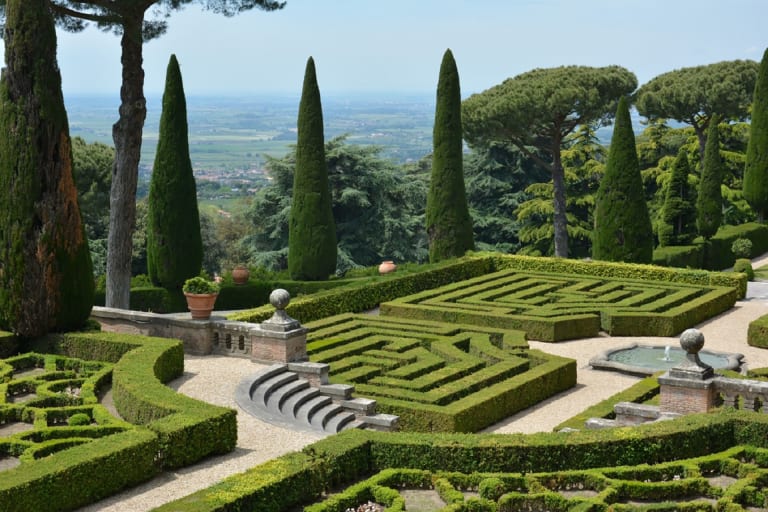
- Free skip-the-line entrance to the Vatican Museums and Sistine Chapel
- Free skip-the-line audio-guided entrance to St. Peter's Basilica
- Free entrance to St. John Lateran Basilica and St. Peter's Prison located in Vatican City
- Free entrance to two of Rome's sights of your choice: the Colosseum, the Roman Forum and the Palatine Hill, the Capitoline Museums, the Borghese Gallery, the Borghese Gallery, the Roman Forum and the Palatine Hill, the Capitoline Museums, the Galleria Borghese and the Roman Forum, the Borghese Gallery and the Vatican Gardens, the Roman Forum and Palatine Hill, the Capitoline Museums, the Borghese Gallery, the Capital Museums and Castel Sant Angelo, among others
- Discounts of around 20% (in some places more) for more than 30 sights and museums in Rome. Sights not eligible for free entry will be included in these discounts
- Free public transport
- Three-day use of the Rome sightseeing bus
- Discounts on excursions, shows, visits to archaeological areas, organised tours and tourist services such as bicycle rental.
Attractions included in the Omnia Card
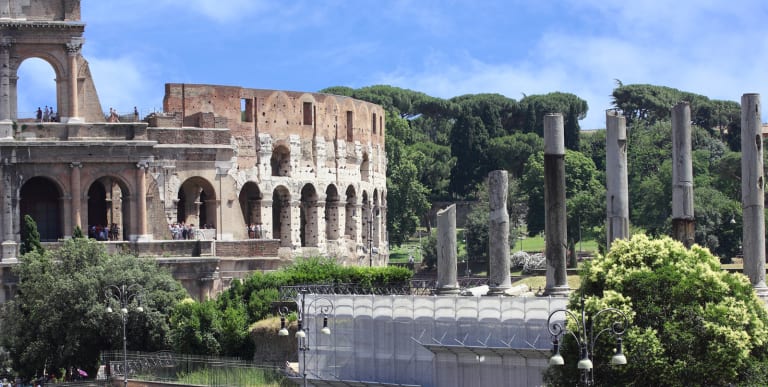
Now we come to the interesting part and before you read on I warn you: I will not be held responsible if after reading this section you feel like jumping on a plane to Rome. Why do I say this? Because the Omnia Card and Roma Pass package includes practically everything there is to see in Rome and there is a lot to see. The forewarned is the forewarned is forearmed.
Vatican Museums and Sistine Chapel with fast-track access
The largest art collection in Europe is in the Vatican Museums, where you'll also find the jewel in the crown: the Sistine Chapel with over 25,000 tourists a day. Egyptian, Etruscan, Greek, Roman and early Christian art is what you will see in this impressive museum including works by Michelangelo, Raphael, Caravaggio, Titian and Leonardo, among others. A must-see for all art lovers passing through Rome.
St. Peter's Basilica with audio guide and fast track access
Admission to St. Peter's Basilica is free, but the audio guide is not. This Basilica is the most famous in Rome, its dome is the highest in the world (impressive views of St. Peter's Square) and St. Peter, considered the first Pope of the Catholic Church, was buried there.
Colosseum, Roman Forum & Palatine Hill
The star visit. Tales of gladiators and emperors lurk in this tour, which includes Rome's amphitheatre, the forum where the city's social life took place and Palatine Hill, the most central of the city's seven hills with archaeological remains dating back to the first century. In this practical guide to Rome Colosseum Tickets And Tours you can read what you need to know to plan your visit. You can also consult this other one: Colosseum, Roman Forum, and Palatine Hill Tickets.
Capitoline Museums
The Campidoglio museums are among the oldest in the world and house collections that were donated by the popes to the people of Rome. Its impressive structure and luxurious rooms are worth a visit in themselves beyond the countless works of art in its art gallery with paintings by Titian, Caravaggio and Rubens.
Castel Sant Angelo
The Fortress of Rome, which also served as a papal palace and prison, is a visit that should not be overlooked among the wonders of Rome. Located near the Vatican, this castle houses secrets such as breathtaking views of the city, its underground mausoleum and its labyrinth of corridors. It is one of the favourite visits for those travelling to Rome with children.
Borghese Gallery
Located in the gardens of Villa Borghese, this gallery houses works by great masters of painting, a sublime collection of sculptures from Ancient Greece and Ancient Rome, as well as early works by Bernini. A delight for art lovers, it can be visited with the tranquillity absent in other major museums in the city. In this article you have all the details to organise your visit to the Gallery: Borghese Gallery in Rome: Tickets and Tours.
Other attractions
- The Treasure Museum of the Basilica of St. John Lateran
- The cloister of the Basilica of St. Paul Outside the Walls
- The Basilica of St. John Lateran.
- St. Peter's Prison
- All the sights of the Rome Pass in the Omnia Card 72 hour version.
Rome Sightseeing Bus and the Omnia Card
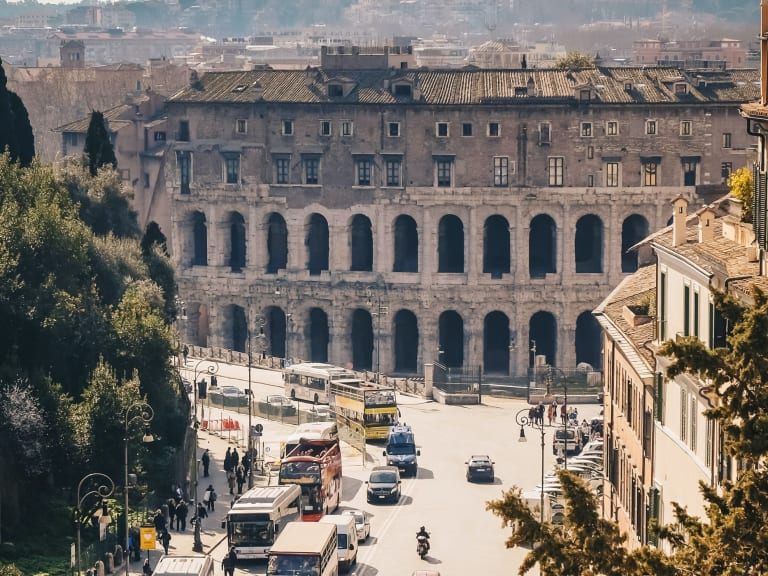
Although I always say that Rome is a city to be enjoyed on foot, it is also true that this can be tiring after several days of sightseeing. If you ever get tired of walking from one place to another, remember that the Omnia Card includes the city sightseeing bus on board of which you will visit the main sights in a panoramic tour while a guide will explain them to you.
Tourist Bus Itinerary
- Vatican City - Castel Sant'Angelo
- San Giovanni dei Fiorentini
- Piazza Navona - Santa Agnese in Agone - Piazza Navona
- Area Sacra Torre Argentina
- Santa Maria in Aracoeli
- Santi Apostoli
- Santa Maria degli Angeli
- Termini Station
- Santa Maria Maggiore
- San Giovanni in Laterano
- Colosseum - San Gregorio al Celio
- Circo Massimo - Santa Sabina all'Aventino
- Teatro Marcello - Santa Maria in Campitelli
- Santa Maria in Aracoeli
- Largo Argentina - Santa Maria ad Martyres
- Vatican - Castel Sant Angelo
Organise your trip with the Omnia Card

If you have decided to buy the Omnia Card to visit Rome, here are some tips to make the most of it:
- Plan your visit taking into account opening times and days of the museums (most are closed on Mondays) to avoid wasting activation time. Doing a bit of tetris beforehand will allow you to see more museums and make the most of the benefits of this city pass.
- Keep booking tickets in advance at busy sites such as the Colosseum or the Vatican Museums at a time that suits you best. I recommend choosing early morning slots at both sites, when there are usually fewer tourists.
- Combine the two cards wisely: you don't have to activate both the Omnia Card and the Roma Pass on the same day. Doing so will save you time.
- Check the routes from one place to another before planning what to see each day. Try to group visits to nearby places on the same day. As for public transport, even if you have it included, remember that in Rome it doesn't work as well as it could, so if you can walk from one place to another, I recommend this option.
Ana's Traveller Tip
Activate the Omnia Pass and Roma Card separately to get more time off during your visit.
What other tourist passes are there to visit Rome?
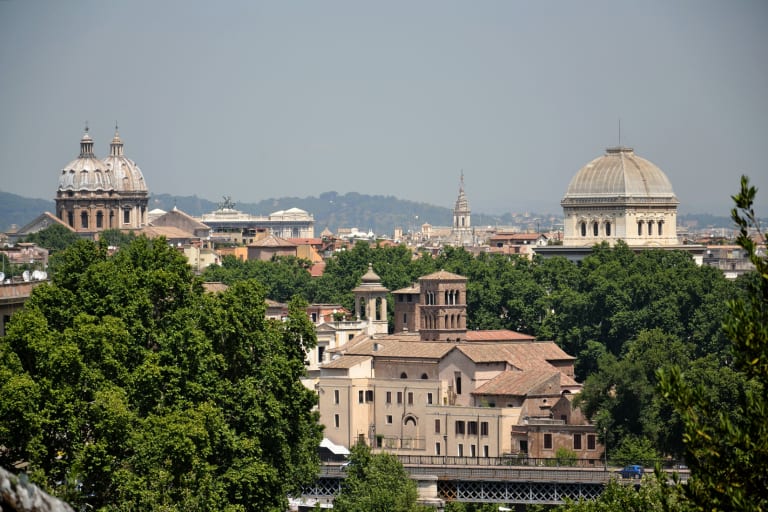
If you are not visiting the Vatican City or if you have visited before, you can choose the Roma Pass to save money and time on visits to Rome's most important sights.
Although the Roma Pass is included with the purchase of the 72-hour Omnia Card, it is also sold separately and will give you access to all non-Vatican City historic sites and public transport in Rome. More information about the Roma Pass is available in this article about the Rome Pass. Rome Pass.
If you are interested in buying the Omnia Card you will also be interested in
If you've picked up the Omnia Card, it's because you want to get the most out of Rome's culture and sites. Once you've 'burned through' this card, it's time to see the Rome that's in plain sight and for which you don't have to pay admission. If you also want to enjoy this part of your visit in all its splendour, I recommend you check this article on Top 11 Tours of Rome.
If you are also thinking of discovering other places near Rome such as Pompeii, I leave you this guide about 5 Best Day Trips to Pompeii from Rome or this one on 8 Best Day Trips from Rome.















